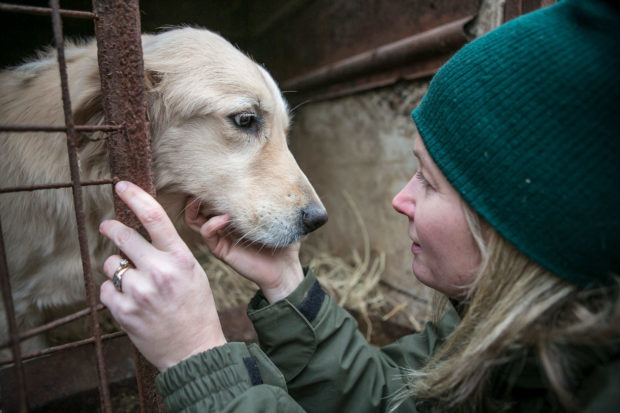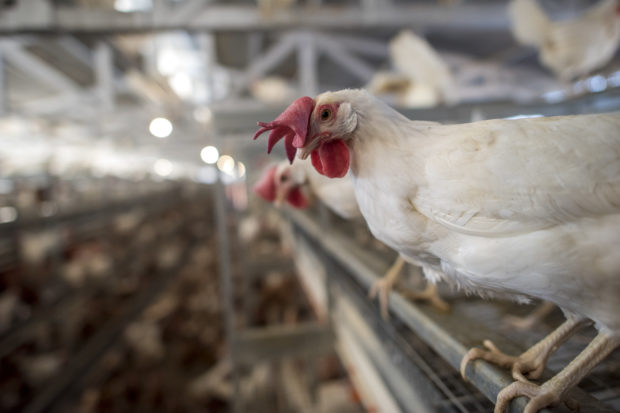By Tom Murray
 At Environmental Defense Fund, we believe that environmental progress and economic growth can and must go hand in hand. EDF+Business works with leading companies and investors to raise the bar for corporate sustainability leadership by setting aggressive, science-based goals; collaborating for scale across industries and global supply chains; and publicly supporting smart environmental safeguards.
At Environmental Defense Fund, we believe that environmental progress and economic growth can and must go hand in hand. EDF+Business works with leading companies and investors to raise the bar for corporate sustainability leadership by setting aggressive, science-based goals; collaborating for scale across industries and global supply chains; and publicly supporting smart environmental safeguards.
This is the second in a series of interviews exploring trends in sustainability leadership as part of our effort to pave the way to a thriving economy and a healthy environment.
As head of the Smithfield Foods’ sustainability program, Stewart Leeth focuses on animal welfare, employee relations, environmental stewardship, food safety and quality, and community development.
EDF has been collaborating with Smithfield for several years now to help farmers optimize fertilizer applications to grow grain for animal feed – and I’m inspired to see the progress that has been made in this arena. But I think this past year was likely the busiest ever for Stewart and his team at Smithfield after they made an industry-leading commitment to reduce greenhouse gas emissions.
This commitment is great news for the environment and for Smithfield’s business. Of course, there’s still a lot of work ahead for the company to fully implement the pledge and work with others in the animal agriculture industry to improve environmental performance. That’s why EDF is calling upon other food and animal agriculture companies to follow Smithfield’s lead and set their own commitments to improve the environmental impacts of agriculture while generating benefits for communities, customers, and businesses themselves.
I got the chance to chat with Stewart before we team up for a more in-depth discussion about raising the bar on corporate sustainability leadership at the Companies vs Climate event in Miami. Here’s an edited excerpt of our discussion.
Last year Smithfield announced a groundbreaking goal to cut your greenhouse gas (GHG) emissions 25% by 2025. That’s 4 million metric tons, or the equivalent of taking nearly 900,000 passenger vehicles off the road. What inspired Smithfield to set the goal and how did you go about putting it in place?

Stewart Leeth, vice president of regulatory affairs and chief sustainability officer for Smithfield Foods, Inc.
Smithfield has taken a leadership position in many areas over the years, from getting all of our facilities and farms across the country under the ISO certified environmental management system to providing group housing systems for pregnant sows on company-owned farms.
To continue leading the way in sustainability, we needed to take a strong position on greenhouse gas emissions. And our relationship with EDF has been growing over the years, particularly on fertilizer optimization to help farmers reduce emissions on their farms. So when EDF’s Maggie Monast and Senior Director of Smithfield Renewables, Kraig Westerbeek, started the conversation about the next big step, we took a hard look at it.
We took a look at the GHG goal from a lot of different perspectives and conceptualized our carbon footprint in the form of a pie chart. We began looking at the business case for different parts of that pie, and we found that looking at it in pieces really helped to show what could be accomplished. We then briefed our president and CEO Ken Sullivan, and he was really enthusiastic about moving forward.
For example, a part of the pie is the carbon footprint from our corn supply. We buy literally trainloads of corn to feed our animals. We saw this as an opportunity to work with our suppliers to buy local grain as opposed to importing it from other places, improving the relationships we have with them along the way.

Was there anything else that you learned as you worked on the carbon footprint pie chart analysis?
We tried to identify opportunities for grain producers. For example, we developed a toolkit as well as nutrient management plans for them — which are things we use every day on our own hog farms for manure management. We tried to apply some of those same principles to row crop farming – to help the farmers grow more crop per drop of fertilizer.
The main benefit from our perspective is that it strengthened our overall relationship with farmers in that part of the supply chain. Local grain is more economical, and we are seeing some real benefits from this effort.
On our processing side, we have more than 40 facilities across the U.S. that operate every day – we can see that energy efficiencies will reduce the cost and the overall energy consumption at those locations.
What kind of response have you heard from stakeholders after you set your GHG goal?
 From the standpoint of the big companies that buy millions of pounds of our products every year like retailers, restaurant chains, food service companies— it’s been very positive.
From the standpoint of the big companies that buy millions of pounds of our products every year like retailers, restaurant chains, food service companies— it’s been very positive.
Our announcement also coincided with a very large effort by Walmart, one of our biggest customers, to reduce GHGs in their own supply chain. Our goal isn’t specifically tied to that, but it certainly was good timing and our announcement caught their attention as well as the attention of many other customers and consumers.
Some of our suppliers have also asked us if there are any ways that they can help us reach our goal. And our employees are excited, too. Everybody wants to work for and with a company that is responsible.
Earlier this fall, Smithfield announced a new initiative called Smithfield Renewables to support your emissions reduction goal and accelerate your ability to achieve it. How do you think this platform will change how you operate and help meet your climate goals?
We announced the Smithfield Renewables at the COMMIT! Forum in Washington, D.C. We formed this business unit to help drive innovations to meet our goal and accelerate renewable energy efforts.
Our CEO wanted to make sure we had someone working on the GHG reduction goal every day – thinking about and working towards achieving it. Kraig Westerbeek will be heading up Smithfield Renewables to vet what kind of projects, vendors, and other partners can help us make it happen.
As an example, we have partnered with a company in Missouri called Roeslein Energy to cover lagoons at our farms in that part of the country. They’re capturing methane, compressing it, and putting it in natural gas pipelines.
According to some estimates, animal agriculture is the second largest contributor to man-made GHG emissions after fossil fuels. As a global business operating in a world that’s more focused on climate change but also demanding more of your product, how are you thinking about that across your operations?
I think the importance of sustainability leadership is growing every day because more consumers are considering these issues when they’re buying goods, including food. And more and more investors are looking for responsible companies to invest in, and they’re quick to punish companies perceived as bad actors.
We all need to take responsibility for our footprint and things that we are doing. I think many companies recognize this, and I think it will drive innovation and technology development to help deal with these issues going forward.
Where is @SmithfieldFoods now, 1 year after their industry-leading commitment to reduce GHG…
Click To Tweet
Your Hong Kong-based parent company WH Group just signed a strategic partnership with JD.com, China’s largest retailer, which will become the exclusive online sales platform for Smithfield’s pork products in China. What implications does this development have for your sustainability goals?
From the very beginning of our relationship, WH Group has been very supportive of our sustainability program. In fact, WH Group as a publicly traded company began reporting on sustainability as well.
Regardless of where consumers are located, they are still interested in whether food is safe and affordable, and produced in a responsible way. I think there is nothing but good in terms of expanding the sustainability footprint for companies like ours.
Can you tell me how and why you got involved in the clean energy policy discussion in North Carolina?
We have a large presence in North Carolina with more than 10,000 employees, many farms, and we contract with family farms to grow animals for us. We also have seven processing facilities throughout the state.
We have done a lot of work on pilot projects focusing on renewables in North Carolina. The state has some great incentives to encourage renewables. They’ve also created a statutory set-aside for power generation from animal agriculture sources, such as poultry and pork.
Those are some of the reasons we’ve supported clean energy policies in the state for a long time, and in other states as well.
How the world’s largest pork producer @SmithfieldFoods is raising the bar on corporate…
Click To Tweet
What do you want to be known for accomplishing at Smithfield under your leadership?
We have a tagline of “Good food. Responsibly.” That’s how I want the company to be thought of: an ethical and responsible company that produces good food.
Last but not least, what Smithfield products were on your Thanksgiving table this year?
For breakfast, we certainly had a lot of bacon to go with our eggs. For dinner, we included some country ham, salt-cured with brown sugar on top. It’s highly recommended! We’ll have it again at Christmas for sure.
Follow Tom on Twitter, @tpmurray
Stay on top of the latest facts, information and resources aimed at the intersection of business and the environment. Sign up for the EDF+Business blog.
Your Name
Your Email
Both fields are required.

Read more













